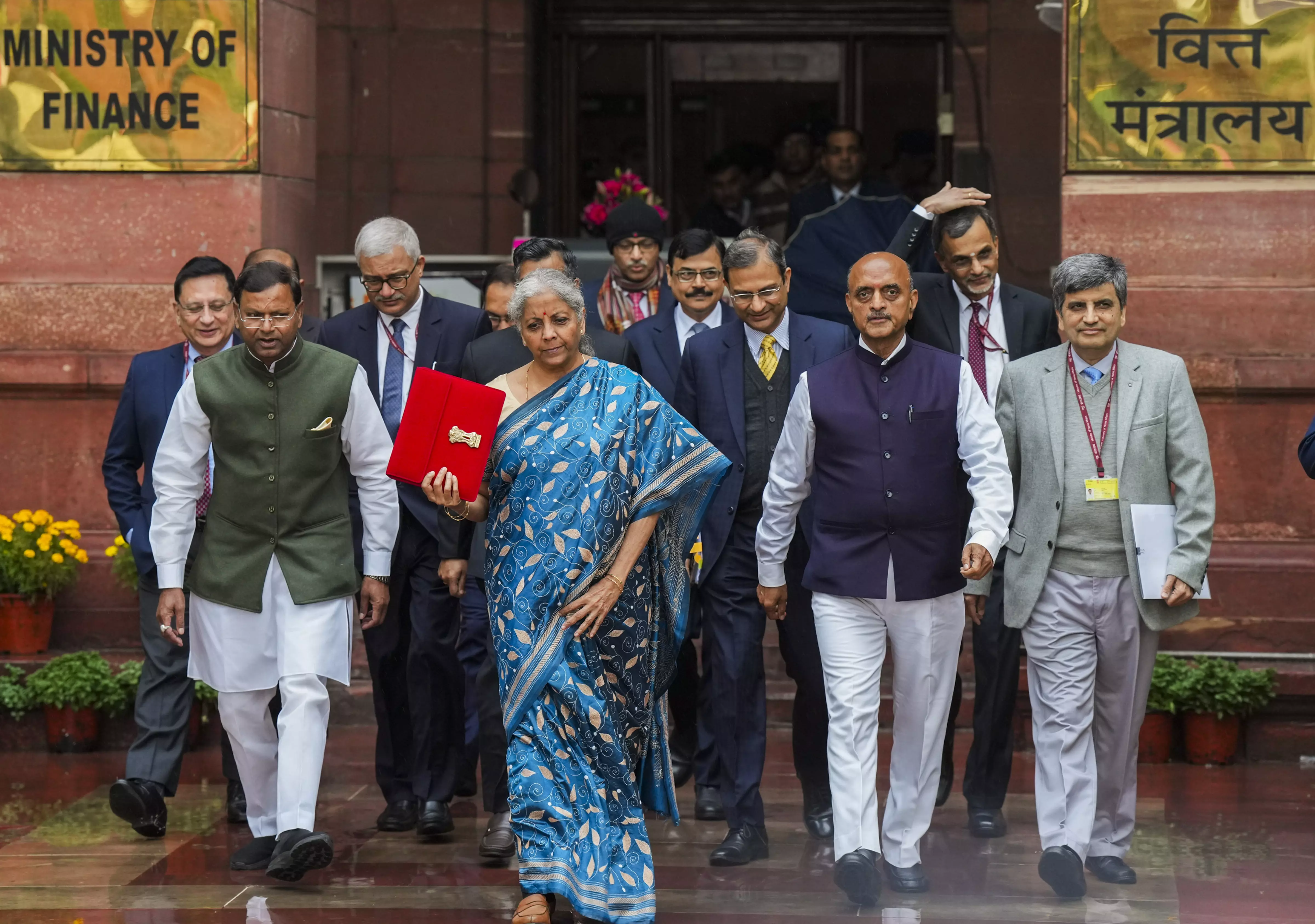
Budget 2024-25: What are the key takeaways?
While the budget proposes no changes in direct and indirect taxes, Finance Minister Nirmala Sitharaman has proposed a slew of reforms in health and agriculture sectors

Union Finance Minister Nirmala Sitharaman on Thursday (February 1) presented the interim budget for the 2024-25 fiscal, stressing on an approach that ensures development that is all-round, all-pervasive and all-inclusive. The full budget will be presented in July once the General Elections are done and a new government comes to power.
Here are the key takeaways from the interim budget:
No changes in direct, indirect taxes
The government has proposed not to make any changes in taxation and retain the same tax rates for direct and indirect taxes including import duties.
Sitharaman, however, said that certain tax benefits to start-ups and investments made by sovereign wealth or pension funds as also tax exemption on certain income of some IFSC units are expiring on March 31, 2024. She proposed to extend the date till March 31, 2025 to provide continuity in taxation.
Revised fiscal deficit
The finance minister said the revised fiscal deficit (difference between the total revenue and the total expenditure in a period of time) is 5.8 per cent of the GDP for financial year 2023-24.
While the same for FY25 is expected to be 5.1 per cent of the GDP, the government aims to cut it down to 4.5 per cent of the GDP in 2025-26.
‘Poor, women, youth, farmers govt's topmost priority’
Sitharaman said meeting the needs and fulfilling the aspirations of four "major castes" – the poor, women, the youth and farmers – of the country are the government's highest priority.
“It covers all castes and people at all levels. We are working to make India 'Viksit Bharat' by 2047. For achieving this goal, we need to improve people's capability and empower them," she said.
“The country progresses, when they progress. All four require and receive the government's support in their quest for better their lives. Their empowerment and wellbeing will drive the country forward," she said.
More medical colleges, health reforms
One of the key proposals of the government is to set up more medical colleges by utilising existing hospital infrastructure, the finance minister said in her budget speech. For the purpose, the government will set up a committee to examine the matter
"Several youth are ambitious to get qualified as doctors. They aim to serve our people through improved healthcare services. Our government plans to set up more medical colleges by utilising the existing hospital infrastructure under various departments.”
The minister also said that the government will encourage vaccination for girls in the 9-14 year age group for the prevention of cervical cancer.
Various schemes for maternal and child healthcare will be brought under one comprehensive programme for synergy in implementation, Sitharaman said.
The newly designed U-WIN platform for managing immunisation and intensified efforts of the Mission Indradhanush will be rolled out expeditiously throughout the country, Sitharaman said.
The government also plans to extend the healthcare cover under Ayushman Bharat to all ASHA and Anganwadi workers.
Rise in tax filers
The finance minister said the number of tax filers has increased by over 2.4 times with direct tax collection trebling since 2014. The tax receipts in 2024-25 are projected at Rs 26.02 lakh crore.
Sitharaman said the increased tax collection has been possible because of the reforms introduced by the Narendra Modi government.
“I would like to assure taxpayers that their contributions have been used wisely for the development of the country and welfare of its people,” Sitharaman said.
More affordable houses
Sitharaman said that over the next five years the government under its PM Awas Yojana (Grameen) will build two crore more houses to meet the requirement arising from increase in the number of families
Rooftop solarisation
The budget also proposes to provide 300 units of free electricity to one crore households every month through rooftop solarisation. Sitharaman said the scheme will help each household save around Rs 15,000-Rs 18,000 annually, aid in charging of electric vehicles, create entrepreneurship opportunities for a large number of vendors for supply and installation and jobs for youth with technical skills, installation and maintenance.
Agricultural reforms
The government proposes to promote private and public investment in post-harvest activities including aggregation, modern storage, efficient supply chains, primary and secondary processing and marketing and branding to help the sector grow faster.
Sitharaman also said that the application of Nano DAP (advance agricultural fertilizers meant to improve nutrient efficiency of crops) on various crops will be expanded to all agro-climatic zones.
The budget also proposes to achieve self-reliance in the cultivation of oil seeds like mustard, groundnut, sesame, soybean and sunflower under its Atmanirbhar Oil Seeds Abhiyan.
“This will cover research for high-yielding varieties, widespread adoption of modern farming techniques, market linkages, procurement, value addition and crop insurance,” Sitharaman said.
Turn East project
The government also plans to pay extra attention to the eastern region of India to help in its faster development, especially the aspirational districts and blocks, Sitharaman said in her budget speech.
‘Golden-era for tech savvy youth’
The budget proposes to establish a corpus of Rs 1 lakh crore with a 50 year interest free loan to help tech savvy youth.
“The corpus will provide long-term financing or refinancing with long tenors and low or nil interest rates. This will encourage the private sector to scale up research and innovation significantly in sunrise domains. We need to have programmes that combine the powers of our youth and technology,” the finance minister said.
3 key railway corridors
The government also plans to introduce three key economic railway corridors under the PM Gati Shakti to enable multi-modal connectivity and improve logistics efficiency and cut costs. These are:
- Energy, mineral and cement corridors
- Port connectivity corridors
- High traffic density corridors

